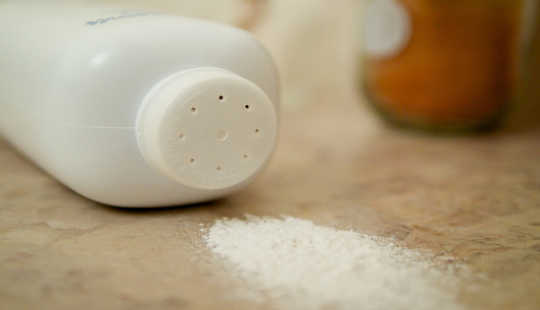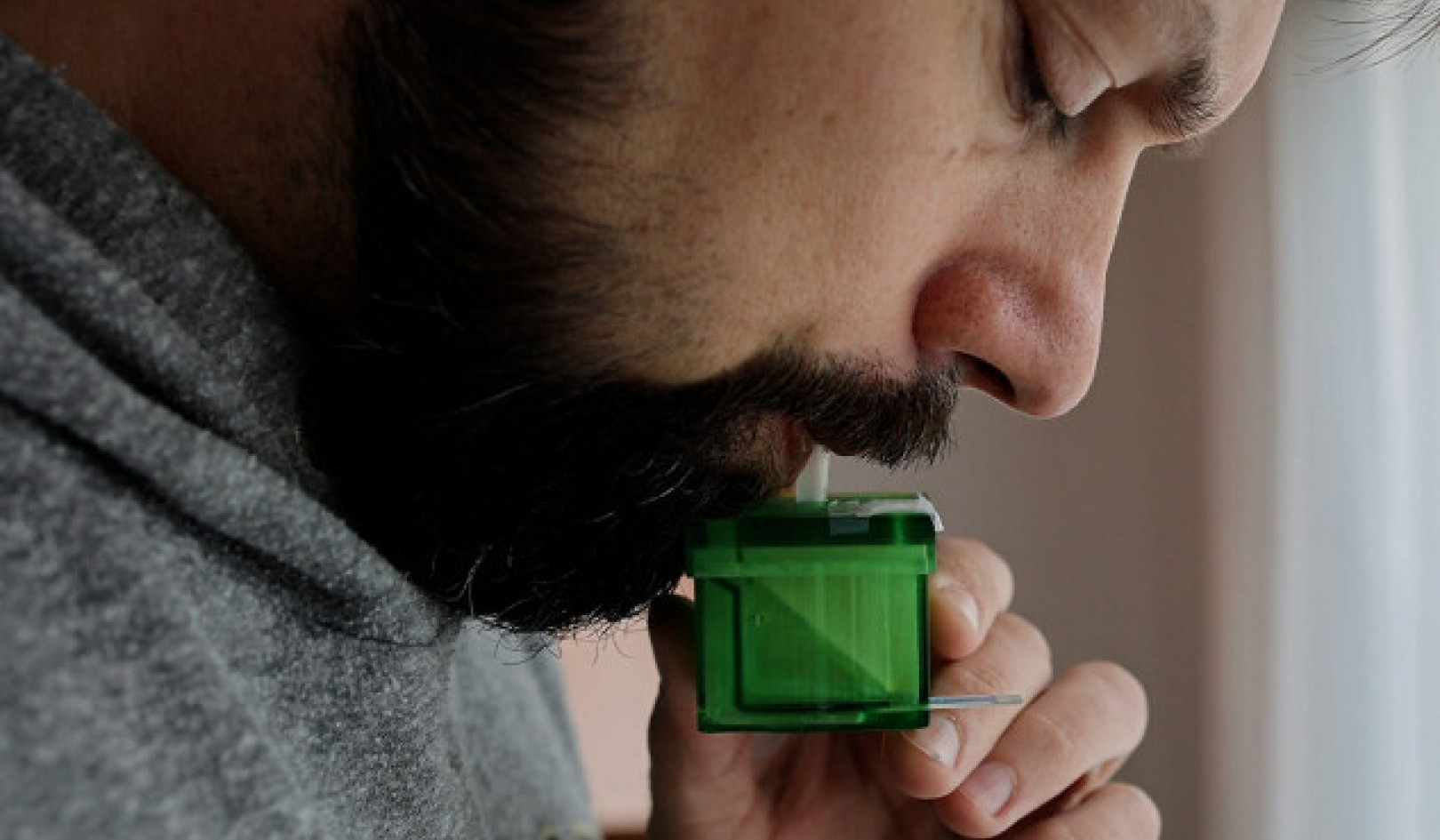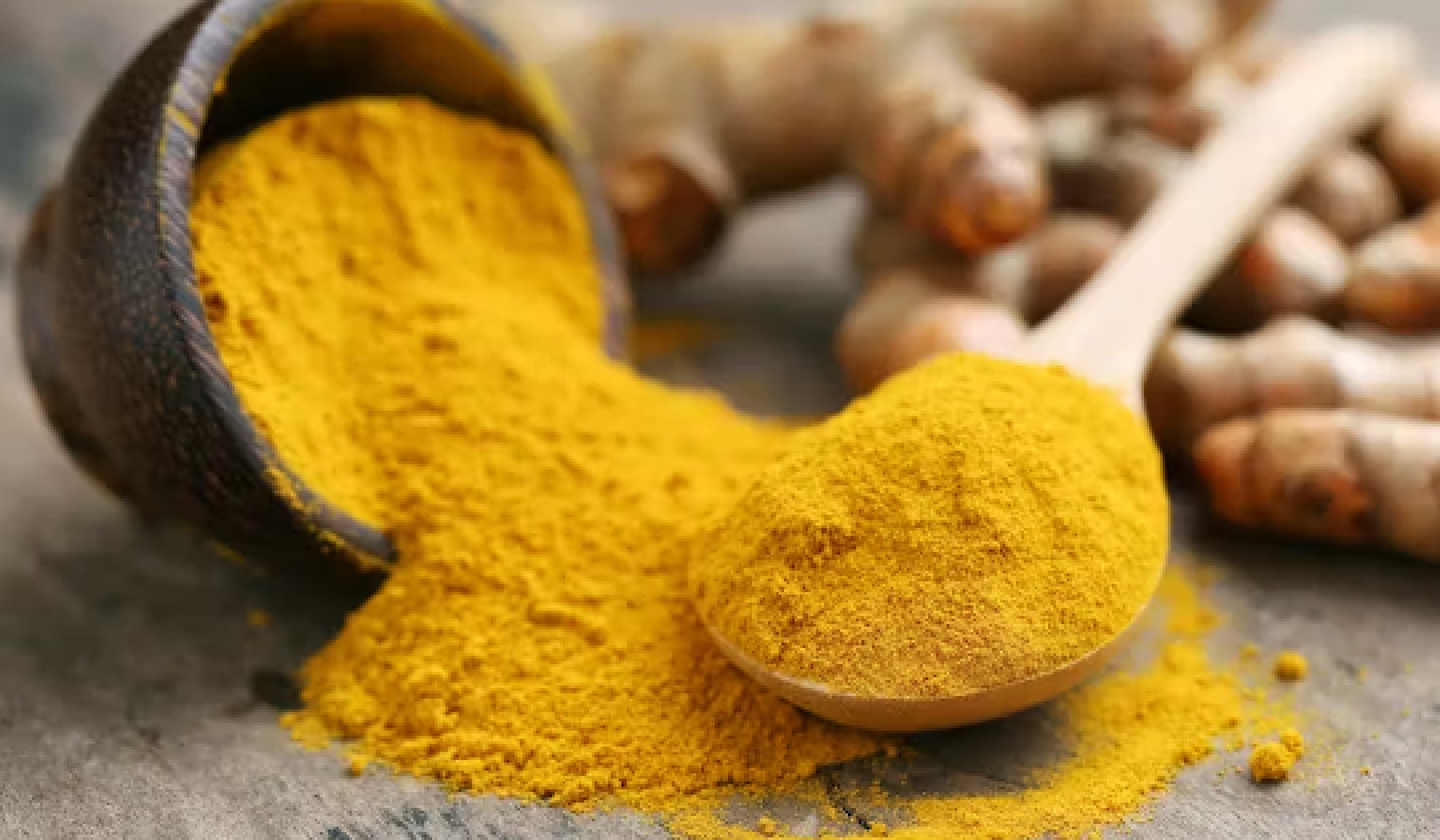
The debate about whether or not talcum powder causes ovarian cancer has rumbled on for decades. However, it recently reached fever pitch after a US court awarded damages to the family of a woman who died of ovarian cancer, allegedly as a result of having used talc as a feminine hygiene product for many years. Does that mean women should avoid using talcum powder? What does the science say?
Industrial safety
Talc is a form of magnesium silicate. Its history dates from ancient Arabic times and there was widespread European and American talc mining and processing in the 19th century. Most people are familiar with talc as a cosmetic or hygiene product, but it has many industrial uses too. It’s used to make ceramics, paints, paper and roofing materials. It’s useful as an industrial lubricant as it can withstand very high temperatures, so it’s useful for things such as the smooth running of conveyor belts.
Safety concerns often emerge first in the workplace, where levels and lengths of exposure are usually much higher than in domestic settings. As talc deposits are often found near asbestos ore, mined talc can be contaminated with asbestos.
In the 1960s questions emerged about links between workers exposed to talc and ovarian cancer after researchers found that asbestos could cause cancer of the lungs and pleural cavity (the lining of the lungs). This triggered more detailed studies in the 1970s of talc’s mineral and chemical composition. Some of these studies looked at lung diseases in talc miners and millers.
Body talc
In the 20th century, body talc became widely used as a domestic product because of its ability to absorb moisture and eliminate friction. If used as a feminine hygiene product, it has been suggested that the powder can reach the ovaries by travelling through the vagina, uterus and fallopian tubes.
Despite home talc products going asbestos-free in the 1970s, there were still concerns that talc was linked to ovarian cancer and so the research focus moved to asbestos-free talc.
Ovarian cancer
Ovarian cancer has several known risk factors. When health agencies list different risk factors they sometimes also give weight to each of these. For example the International Agency for Research on Cancer lists talc-based body powder as associated with ovarian cancer when applied between the legs, observing a “modest but unusually consistent excess in risk” in many case-control studies. This marks a change from its 1987 report which found there was inadequate evidence for talc causing cancer in humans.
The American Cancer Society noted that studies produced mixed findings and considered that, if there was a risk, the risk would be very small. Still, the society thought that because talc was so widely used in many different products more research should be done to establish if the risks were “real”.
The European talc industry association considered the suggested link between talc use between the legs and ovarian cancer in US case-control studies to be highly controversial because the observed differences in risk between the talc users and the non-talc users was slight. Instead, the association cites two studies from 2005 and 2006 to back its position. One of the studies – a prospective cohort study – did not find a “substantial association” between using talc on the genitals and an increase in ovarian cancer risk. (Prospective cohort studies are considered to be a higher quality of evidence than case-control studies.)
Cancer Research UK has examined various risk factors and preventive factors for ovarian cancer including age, genetics, weight, various other diseases and hormones as well as talc use between the legs. While it rates different levels of risk for these factors, its position on talc is that the risk is not clear and if any risk is found it will be “fairly small”.
But more recent scientific studies continue to confirm a trend that links talc use and epithelial ovarian cancer (the most common type of ovarian cancer). A 2013 analysis led by Harvard University of 8,525 ovarian cancer cases and 9,859 controls concluded that genital talc powder use is associated with a small-to-moderate increase in risk of various sub-types of ovarian cancer. It found that “genital powder use was associated with a similar increased risk of borderline and invasive ovarian cancer overall”. They also noted that, as there are few ovarian cancer risks women can avoid, “avoidance of genital powders may be a possible strategy to reduce ovarian cancer incidence”. This would seem a wise precautionary policy.
About The Author
This article originally appeared on The Conversation
Related Book:
at

Thanks for visiting InnerSelf.com, where there are 20,000+ life-altering articles promoting "New Attitudes and New Possibilities." All articles are translated into 30+ languages. Subscribe to InnerSelf Magazine, published weekly, and Marie T Russell's Daily Inspiration. InnerSelf Magazine has been published since 1985.

Thanks for visiting InnerSelf.com, where there are 20,000+ life-altering articles promoting "New Attitudes and New Possibilities." All articles are translated into 30+ languages. Subscribe to InnerSelf Magazine, published weekly, and Marie T Russell's Daily Inspiration. InnerSelf Magazine has been published since 1985.


 Andrew Watterson, Chair in Health Effectiveness, University of Stirling. He is Director of Research Director of Centre for Public Health and Population Health Research and Head of the Occupational and Environmental Health Research Group
Andrew Watterson, Chair in Health Effectiveness, University of Stirling. He is Director of Research Director of Centre for Public Health and Population Health Research and Head of the Occupational and Environmental Health Research Group


















